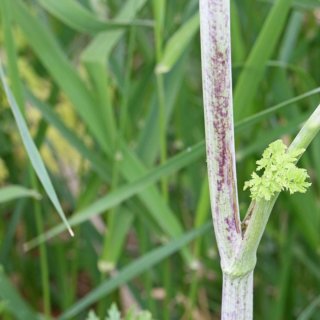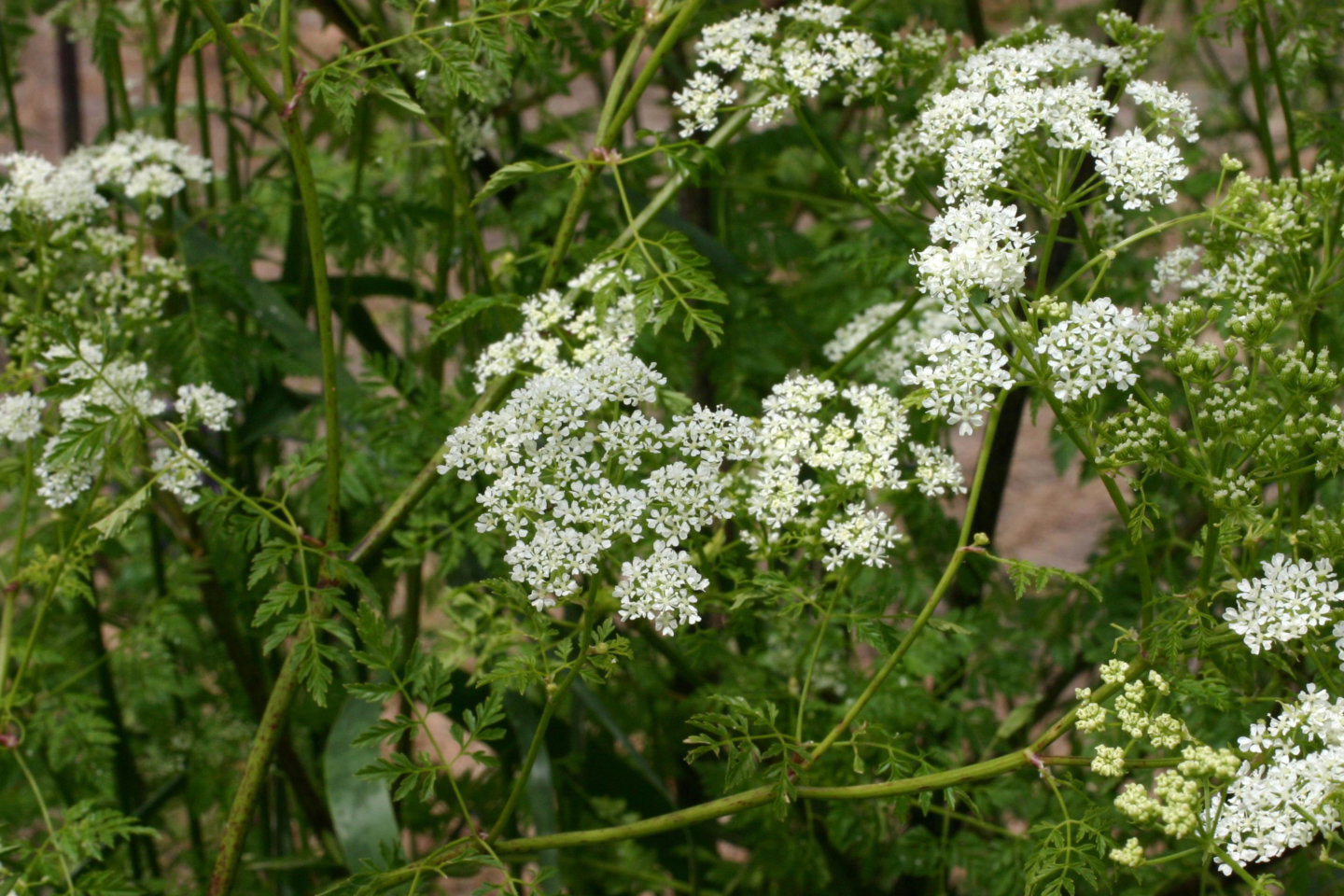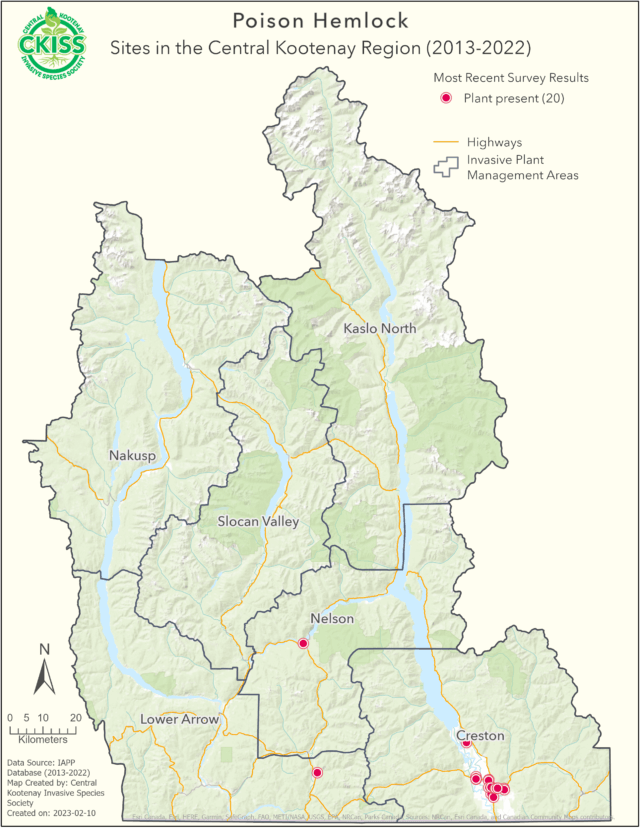Conium maculatum
WARNING! All parts of the plant are DEADLY to people, livestock, and wildlife when ingested.
Description

- Native to Europe and Asia
- Grows up to 3m tall with musty smelling fern-like leaves
- Large clusters of five-petalled white flowers that can produce 40,000 seeds per plant. These seeds are viable for up to 6 years.
- Mature plants have thick, hollow, hairless stems with purple spots and streaks.
- Grows in a variety of conditions, but prefers moist soil with sun.
Consequences of invasion
- WARNING! All parts of the plant are DEADLY to people, livestock, and wildlife when ingested. Young plants can be mistaken for carrots.
- This plant can outcompete native vegetation, especially in riparian ecosystems.
Status in the CKISS region
- Poison hemlock is currently classified as Eradicate on the CKISS Annual Priority List.
- There are a number of known poison hemlock sites, predominantly in the Creston Invasive Plant Management Area (IPMA). It has also been found in the Nelson and Lower Arrow IPMAs.
- Because of its limited distribution, the goal is to eradicate this species from these sites and prevent further spread into new areas.
- Please report any findings of this species immediately.
- To learn more about how CKISS classifies and manages invasive species, see our Invasive Species Priority Lists page.
Integrated pest management options
- Mechanical: Wear full personal protective equipment and wash hands thoroughly with soap and water after treatment. Young/small plants can be hand pulled (wearing gloves), ensuring as much root as possible is removed. Larger mature plants can be removed by cutting the stem and then use a sharp shovel or digging fork to dig up the taproot. The best time to dig out poison hemlock is before it flowers and sets seed.
- The proper way to dispose of poison hemlock is to place all the plant parts in a sealed plastic bags and dispose of it in a landfill or place it in your home garbage for curbside pick up. All landfills within the RDCK and RDKB accept invasive plant species for free. Ensure your material is bagged in clear plastic bags and notify the attendant that you have invasive plant species. Plants must be identifiable through the bag. For more information please see the RDCK Resource Recovery Bylaw. Poison hemlock should never be composted or burned because it releases harmful toxins when composted or burned.
- After completion of mechanical removal of poison hemlock you should: Remove protective gear inside out to avoid contact with skin, wash hands and equipment with soap and water, dispose of coveralls and gloves or wash non disposable clothing.
- If poison hemlock sap comes into contact with your skin wash the area immediately with soap and water.
- If you suspect ingestion or severe exposure to Poison Hemlock, Contact poison control or seek medical attention immediately.
- Mechanical: Poison hemlock should not be mowed, as mowing can disperse inhalable toxins into the air.
- Chemical: Herbicides are available. More information here.
- Biological: Not currently available.
- Learn about becoming PlantWise to avoid spreading poison hemlock.









